
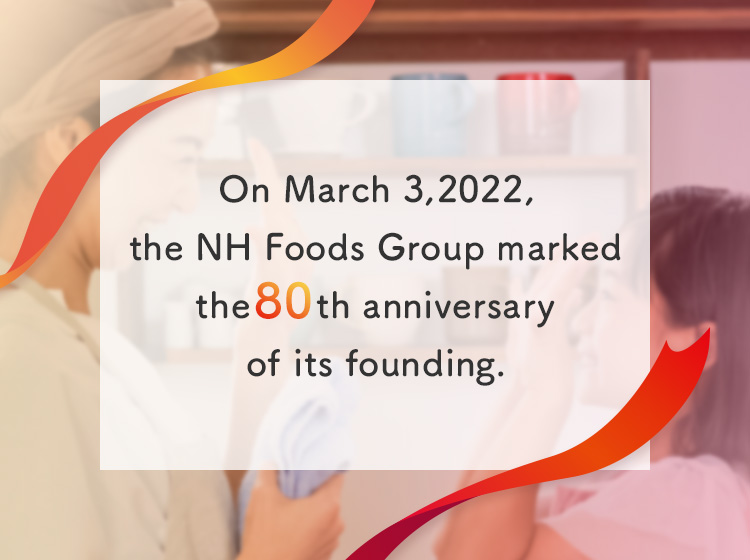
Episodes
The following is a selection of memorable episodes from our 80-year history.
March 1942The Origins of the NH Foods Group—Establishment of the Tokushima Meat Processing Plant
The Tokushima Meat Processing Plant, the forerunner of the NH Foods Group, was opened on March 3, 1942.
The company’s founder, Yoshinori Okoso, decided to launch his own business using experience gained while working for a pig farming cooperative in Kagawa Prefecture. He established the plant in a converted two-story mercantile house with an area of about 100 square meters near JR Tokushima Station in the Terashima-Honcho district of Tokushima City. Initially the business employed a total of seven people. World War II was still raging, and just two-and-half years after establishing the company, Okoso was forced to close its doors when he was conscripted.
Okoso was in Kanoya City, Kagoshima Prefecture when the war ended. The Tokushima Meat Processing Plant was burned to the ground during a massive air raid on July 4, 1945. Having lost not only his factory but also his equipment and staff, Okoso signed a processing contract with the pig farming cooperative in Kagawa Prefecture. He collected meat from farmers in Tokushima and transported ham and sausages manufactured by the cooperative for sale in the Kyoto-Osaka-Kobe area. The situation in Japan stabilized over the next few years, and in August 1948 Okoso was able to reopen the Tokushima Meat Processing Plant in a new facility in Tokushima City’s Bandai-cho district.
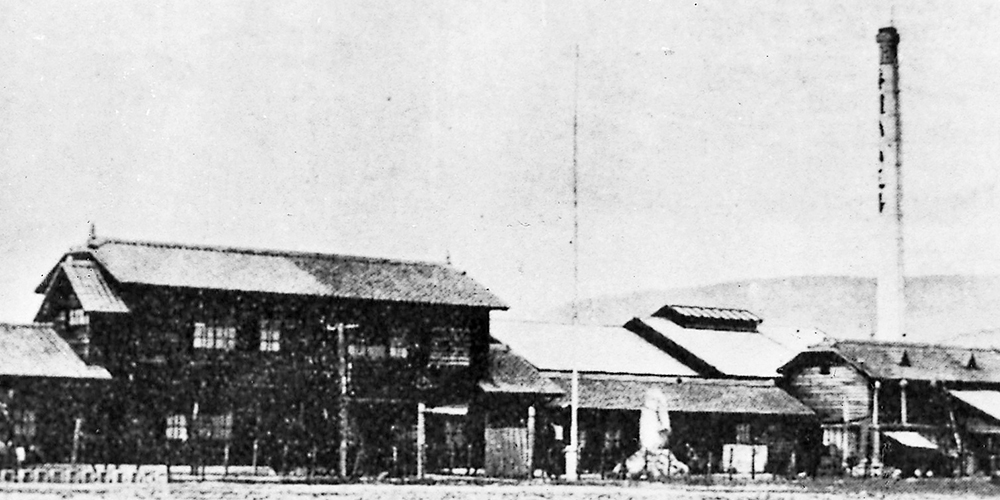
Yoshinori Okoso abandoned the idea of further education at the age of 19 and spent the next eight years working for a pig farming cooperative in Kagawa Prefecture.
- March 1942The Origins of the NH Foods Group—Establishment of the Tokushima Meat Processing Plant
-
The Tokushima Meat Processing Plant, the forerunner of the NH Foods Group, was opened on March 3, 1942.
The company’s founder, Yoshinori Okoso, decided to launch his own business using experience gained while working for a pig farming cooperative in Kagawa Prefecture. He established the plant in a converted two-story mercantile house with an area of about 100 square meters near JR Tokushima Station in the Terashima-Honcho district of Tokushima City. Initially the business employed a total of seven people. World War II was still raging, and just two-and-half years after establishing the company, Okoso was forced to close its doors when he was conscripted.
Okoso was in Kanoya City, Kagoshima Prefecture when the war ended. The Tokushima Meat Processing Plant was burned to the ground during a massive air raid on July 4, 1945. Having lost not only his factory but also his equipment and staff, Okoso signed a processing contract with the pig farming cooperative in Kagawa Prefecture. He collected meat from farmers in Tokushima and transported ham and sausages manufactured by the cooperative for sale in the Kyoto-Osaka-Kobe area. The situation in Japan stabilized over the next few years, and in August 1948 Okoso was able to reopen the Tokushima Meat Processing Plant in a new facility in Tokushima City’s Bandai-cho district.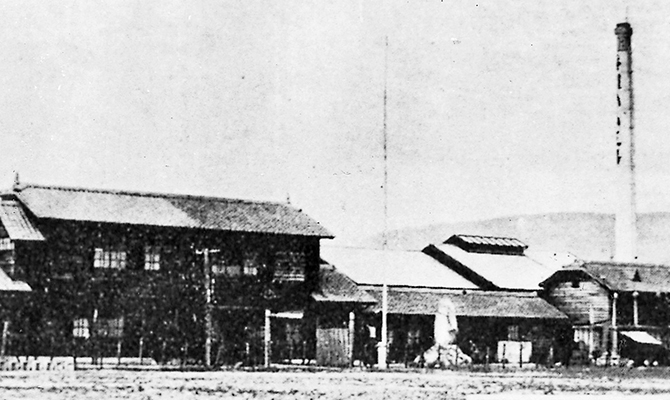
Yoshinori Okoso abandoned the idea of further education at the age of 19 and spent the next eight years working for a pig farming cooperative in Kagawa Prefecture.
December 1951Restructuring as a joint stock company—Tokushima Ham Co., Ltd.
Okoso continually expanded the plant and invested in new facilities, including the establishment of a meat processing annex in order to fulfill his commitment to using only fresh raw materials.
As Japan’s postwar food shortages began to ease, demand for ham and sausages expanded, triggering intense competition among processed meat manufacturers. In December 30, 1951, Okoso restructured his business into Tokushima Ham Co., Ltd., a joint-stock company capitalized at ¥1.5 million, with the aim of attracting talented staff. In January 1952 the Osaka Office was upgraded into the Osaka Branch. In the same year, the company also opened offices in Kobe, Okayama, and Takamatsu.
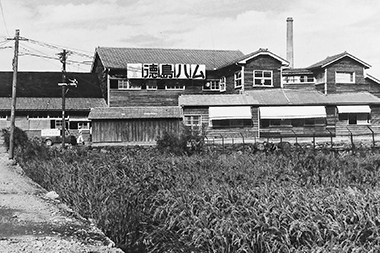
The headquarters and plant of Tokushima Ham Co., Ltd. in 1955
- December 1951Restructuring as a joint stock company—Tokushima Ham Co., Ltd.
-
Okoso continually expanded the plant and invested in new facilities, including the establishment of a meat processing annex in order to fulfill his commitment to using only fresh raw materials.
As Japan’s postwar food shortages began to ease, demand for ham and sausages expanded, triggering intense competition among processed meat manufacturers. In December 30, 1951, Okoso restructured his business into Tokushima Ham Co., Ltd., a joint-stock company capitalized at ¥1.5 million, with the aim of attracting talented staff. In January 1952 the Osaka Office was upgraded into the Osaka Branch. In the same year, the company also opened offices in Kobe, Okayama, and Takamatsu.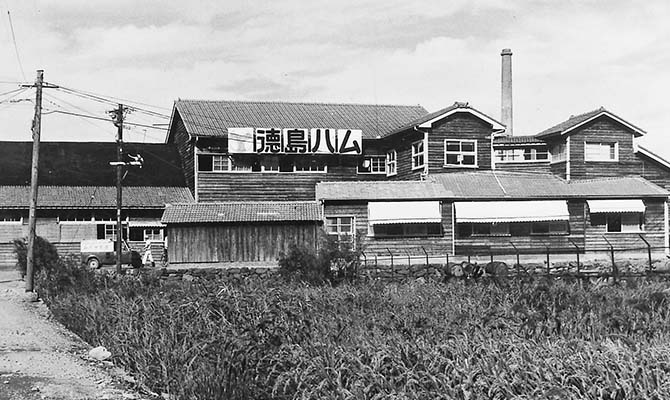
The headquarters and plant of Tokushima Ham Co., Ltd. in 1955
August 1, 1963Merger with Torise Ham Co., Ltd.—Establishment of Nippon Meat Packers, Inc.
On August 1, 1963, Tokushima Ham Co., Ltd. merged with Torisei Ham Co., Ltd. to form Nippon Meat Packers, Inc.
A few years before the merger, in June 1960, the Japanese government had adopted an outline plan for the liberalization of trade and foreign exchange. It was clear that one of goals under this plan was to expand the number of items covered by import liberalization, and that it was only a matter of time before the government would allow direct investment in Japanese companies by foreign capital. The management of Tokushima Ham decided to undertake the merger because of their concern about potential moves by the many heavily capitalized meat packing companies in the United States. The Japanese name of the company was selected from suggestions put forward by employees. The name “Nippon Ham” appeared most frequently among the approximately 300 suggestions submitted. The post-merger company had several meat processing plants. It also had 10 processed meat manufacturing plants in Asahikawa, Abashiri, Ibaraki, Tokyo, Wakayama, Tokushima, Hiroshima, and Miyazaki, as well as two in Osaka. Based on net sales, Nippon Meat Packers was Japan’s biggest ham and sausage manufacturer.
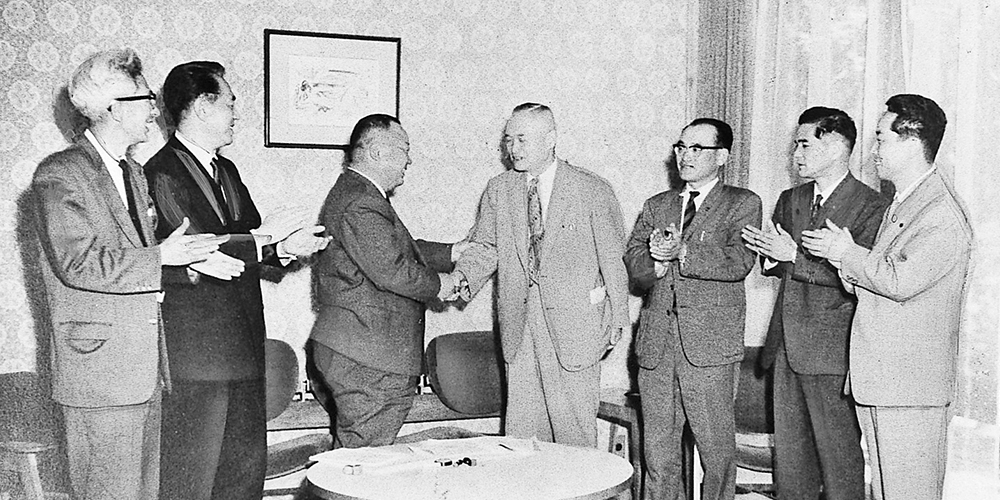
At the merger signing ceremony in May 1963.
- August 1, 1963Merger with Torise Ham Co., Ltd.—Establishment of Nippon Meat Packers, Inc.
-
On August 1, 1963, Tokushima Ham Co., Ltd. merged with Torisei Ham Co., Ltd. to form Nippon Meat Packers, Inc.
A few years before the merger, in June 1960, the Japanese government had adopted an outline plan for the liberalization of trade and foreign exchange. It was clear that one of goals under this plan was to expand the number of items covered by import liberalization, and that it was only a matter of time before the government would allow direct investment in Japanese companies by foreign capital. The management of Tokushima Ham decided to undertake the merger because of their concern about potential moves by the many heavily capitalized meat packing companies in the United States. The Japanese name of the company was selected from suggestions put forward by employees. The name “Nippon Ham” appeared most frequently among the approximately 300 suggestions submitted. The post-merger company had several meat processing plants. It also had 10 processed meat manufacturing plants in Asahikawa, Abashiri, Ibaraki, Tokyo, Wakayama, Tokushima, Hiroshima, and Miyazaki, as well as two in Osaka. Based on net sales, Nippon Meat Packers was Japan’s biggest ham and sausage manufacturer.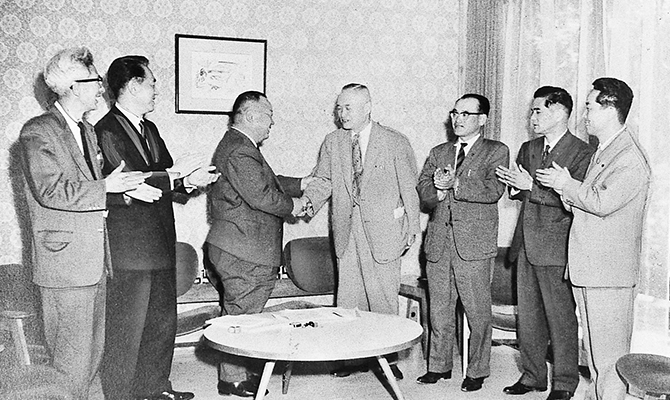
At the merger signing ceremony in May 1963.
February 1966Launch of Winny—The first hit product for Nippon Meat Packers
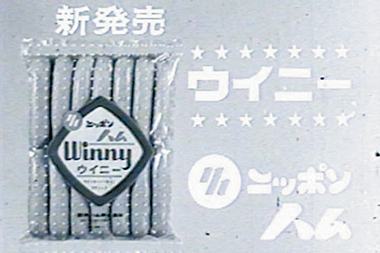
February 1966 saw the nationwide launch of Winny skinless sausages, which would become a long-selling hit for the NH Foods Group. Production of wiener sausages expanded so rapidly after 1960 that specialist manufacturers appeared. At that time, most ham and sausage manufacturers, including Tokushima Ham, sold their products under their company names, and the use of the brand name “Winny,” which consumers readily associated with wiener sausages, was seen as revolutionary. In 1972 a product character called “Winny Boya” appeared for the first time in TV commercials. This character has been used continuously on the product packaging for over 55 years.
- February 1966Launch of Winny—The first hit product for Nippon Meat Packers
-
February 1966 saw the nationwide launch of Winny skinless sausages, which would become a long-selling hit for the NH Foods Group. Production of wiener sausages expanded so rapidly after 1960 that specialist manufacturers appeared. At that time, most ham and sausage manufacturers, including Tokushima Ham, sold their products under their company names, and the use of the brand name “Winny,” which consumers readily associated with wiener sausages, was seen as revolutionary. In 1972 a product character called “Winny Boya” appeared for the first time in TV commercials. This character has been used continuously on the product packaging for over 55 years.
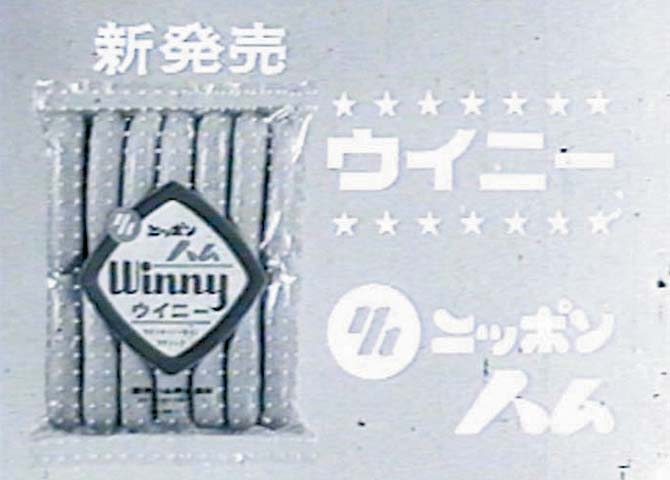
March 1968Entry into the farming business—Establishment of Nippon Broiler Co., Ltd.
Tokushima Ham Co., Ltd. had operated a fresh meat processing plant alongside its ham and sausage processing facility and was one of the few companies to supply both fresh meat and processed products, such as ham and sausages. In 1958 it established a fresh meat sales organization and began to wholesale fresh meat to restaurants and specialty meat retailers.
The amount of chicken consumed in Japan began to expand rapidly in the mid-1960s, and the market increased by a factor of 7.8 over a six-year period. Nippon Meat Packers was already selling packaged chicken for commercial use, and in March 1968 it established Nippon Broiler Co., Ltd. (now Nippon White Farm Co., Ltd.) as a joint venture with the aim of securing a reliable source of supply. The new company produced 300,000 chickens per month. Japan Food Corporation, a sales company specializing in fresh meat, was established in 1970.
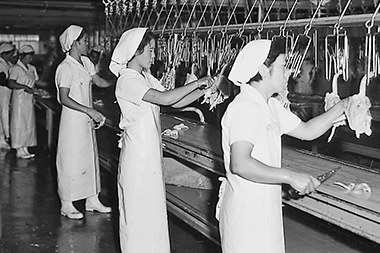
- March 1968Entry into the farming business—Establishment of Nippon Broiler Co., Ltd.
-
Tokushima Ham Co., Ltd. had operated a fresh meat processing plant alongside its ham and sausage processing facility and was one of the few companies to supply both fresh meat and processed products, such as ham and sausages. In 1958 it established a fresh meat sales organization and began to wholesale fresh meat to restaurants and specialty meat retailers.
The amount of chicken consumed in Japan began to expand rapidly in the mid-1960s, and the market increased by a factor of 7.8 over a six-year period. Nippon Meat Packers was already selling packaged chicken for commercial use, and in March 1968 it established Nippon Broiler Co., Ltd. (now Nippon White Farm Co., Ltd.) as a joint venture with the aim of securing a reliable source of supply. The new company produced 300,000 chickens per month. Japan Food Corporation, a sales company specializing in fresh meat, was established in 1970.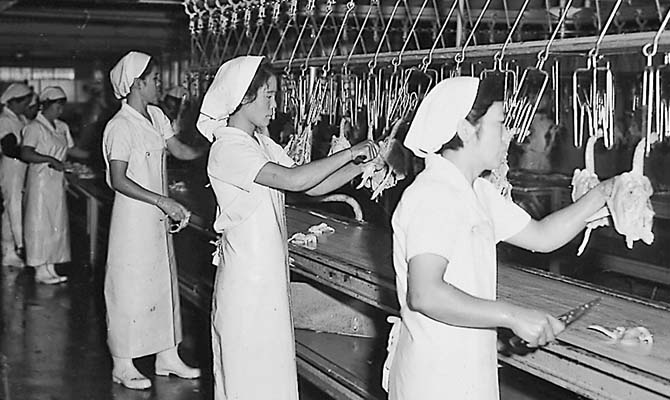
September 1969Consumer Delegate Committee System established to reflect customer feedback in products
After operating a monitor system for several years, Nippon Meat Packers decided in September 1969 to launch the Consumer Delegate Committee System with the aim of reflecting direct consumer input in products through two-way communication. There were almost 500 applications for the initial 10 positions as Consumer Delegate Committee members for the Kyoto-Osaka-Kobe area. The Consumer Delegate Committee members, who served six-month terms, attended regular monthly meetings at which they put forward ideas for the development of new products. The first and second Consumer Delegate meetings resulted in the creation of Buntatta Sausages, a hit product targeted toward children. The Consumer Delegate Committee system is still operating in Osaka and Tokyo and continues to provide valuable consumer feedback.
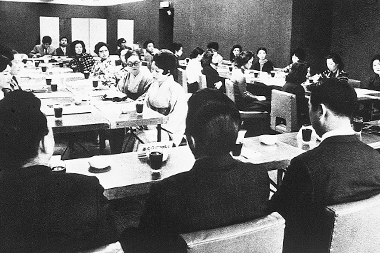
- September 1969Consumer Delegate Committee System established to reflect customer feedback in products
-
After operating a monitor system for several years, Nippon Meat Packers decided in September 1969 to launch the Consumer Delegate Committee System with the aim of reflecting direct consumer input in products through two-way communication. There were almost 500 applications for the initial 10 positions as Consumer Delegate Committee members for the Kyoto-Osaka-Kobe area. The Consumer Delegate Committee members, who served six-month terms, attended regular monthly meetings at which they put forward ideas for the development of new products. The first and second Consumer Delegate meetings resulted in the creation of Buntatta Sausages, a hit product targeted toward children. The Consumer Delegate Committee system is still operating in Osaka and Tokyo and continues to provide valuable consumer feedback.
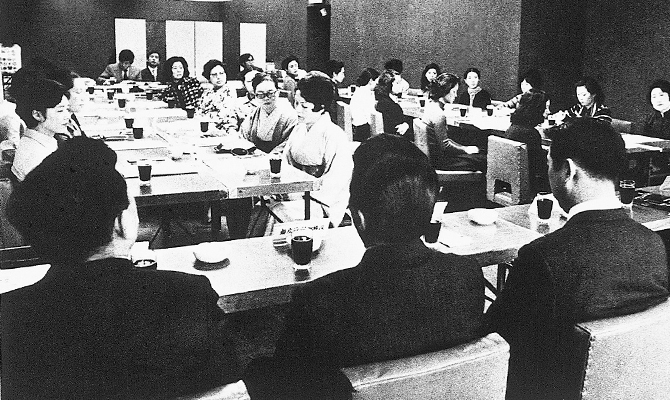
1977-Increasing integration of production and processing through to sales
After moving into the farming business in 1968, Nippon Meat Packers steadily expanded its operations over the following years with the establishment of Yakumo Farm in 1977, Sawara Farm in 1978, Shiretoko Farm in 1983, and Tohoku Farm in 1983. In 1994, these farms were integrated to create two companies specializing in chicken and pork. Now operating as White Farm Co., Ltd. and Nippon Clean Farm Co., Ltd. respectively, both companies boast the biggest production volumes in Japan. In 1996, processing companies based at six locations in Japan were merged into Nippon Food Packers, Inc. The aims of this increasing integration were to ensure reliable supplies of meat while maintaining high standards of product safety and quality.
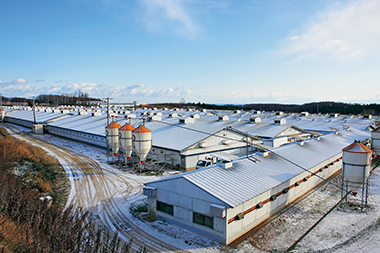
The Shiretoko office of Nippon Clean Farm Co., Ltd.
- 1977-Increasing integration of production and processing through to sales
-
After moving into the farming business in 1968, Nippon Meat Packers steadily expanded its operations over the following years with the establishment of Yakumo Farm in 1977, Sawara Farm in 1978, Shiretoko Farm in 1983, and Tohoku Farm in 1983. In 1994, these farms were integrated to create two companies specializing in chicken and pork. Now operating as White Farm Co., Ltd. and Nippon Clean Farm Co., Ltd. respectively, both companies boast the biggest production volumes in Japan. In 1996, processing companies based at six locations in Japan were merged into Nippon Food Packers, Inc. The aims of this increasing integration were to ensure reliable supplies of meat while maintaining high standards of product safety and quality.
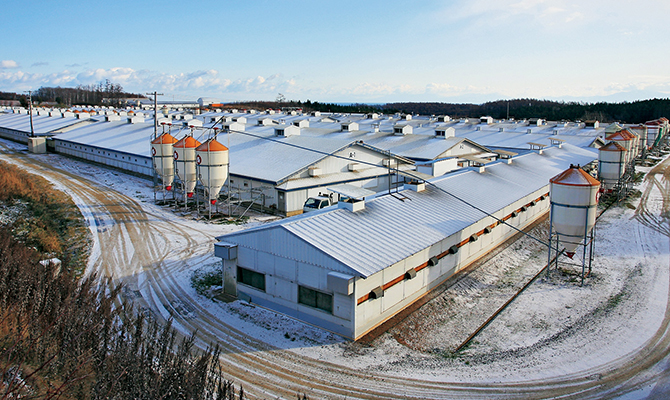
The Shiretoko office of Nippon Clean Farm Co., Ltd.
April 1979Establishment of Nipponham Processed Foods Ltd.—Start of processed food production
In 1971, the Processed Foods Development Section was established within the Fresh Meats Business Department. The first products created were prepared foods made from the internal organs of beef cattle, which are rarely available for use in home cooking. These products were manufactured in a test plant established alongside the Isahaya plant, which is a meat processing facility. In 1973, the company also started to produce hamburger steaks for supply to restaurants. Hamburger steaks subsequently became a key product category. The Isahaya Plant was completed in 1975, and in April 1979 Nipponham Processed Foods Ltd. was established. In the following year, production began at the Kuwana Plant in Mie Prefecture.
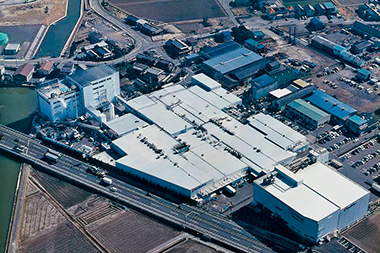
The Kuwana Plant of Nipponham Processed Foods Ltd.
- April 1979Establishment of Nipponham Processed Foods Ltd.—Start of processed food production
-
In 1971, the Processed Foods Development Section was established within the Fresh Meats Business Department. The first products created were prepared foods made from the internal organs of beef cattle, which are rarely available for use in home cooking. These products were manufactured in a test plant established alongside the Isahaya plant, which is a meat processing facility. In 1973, the company also started to produce hamburger steaks for supply to restaurants. Hamburger steaks subsequently became a key product category. The Isahaya Plant was completed in 1975, and in April 1979 Nipponham Processed Foods Ltd. was established. In the following year, production began at the Kuwana Plant in Mie Prefecture.
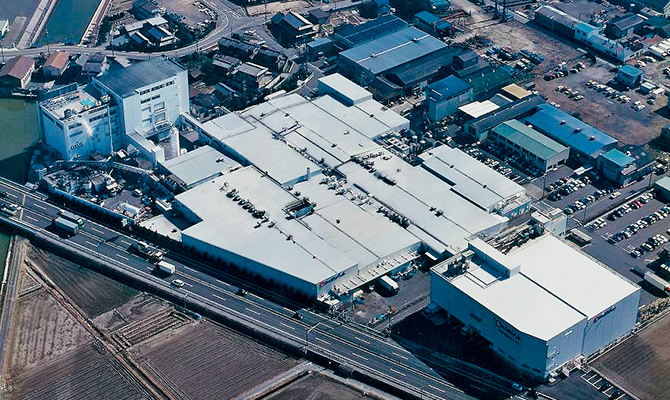
The Kuwana Plant of Nipponham Processed Foods Ltd.
July 1981Entry into the marine foods business with the acquisition of Marine Foods Corporation
In July 1981, Nippon Meat Packers invested in Marine Foods Corporation and took over its business operations. After its establishment in 1964 as an importer and wholesaler of marine foods, Marine Foods Corporation had achieved rapid growth by using squid, fish roe, jellyfish, and other ingredients to produce various fresh delicacies. Following the acquisition of these business operations, Nippon Meat Packers used these fresh delicacies as the nucleus for an expanding range of retort pouch products and general processed marine foods. Today the NH Foods Group manufactures and sells a variety of processed marine products and has gained a particularly large share of the market for fish processed for use on sushi. The Mie Plant in the Karasu-cho district of Tsu City in Mie Prefecture produces over 500 different types of processed seafood and prepared foods each month.
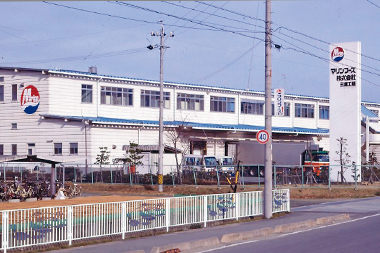
The Mie Plant of Marine Foods Corporation
- July 1981Entry into the marine foods business with the acquisition of Marine Foods Corporation
-
In July 1981, Nippon Meat Packers invested in Marine Foods Corporation and took over its business operations. After its establishment in 1964 as an importer and wholesaler of marine foods, Marine Foods Corporation had achieved rapid growth by using squid, fish roe, jellyfish, and other ingredients to produce various fresh delicacies. Following the acquisition of these business operations, Nippon Meat Packers used these fresh delicacies as the nucleus for an expanding range of retort pouch products and general processed marine foods. Today the NH Foods Group manufactures and sells a variety of processed marine products and has gained a particularly large share of the market for fish processed for use on sushi. The Mie Plant in the Karasu-cho district of Tsu City in Mie Prefecture produces over 500 different types of processed seafood and prepared foods each month.
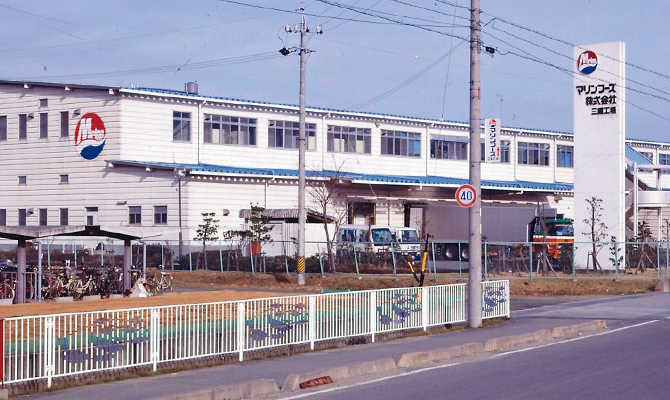
The Mie Plant of Marine Foods Corporation
October 1981First league championship victory for the Nippon-Ham Fighters eight years after the team’s founding
In 1973, the 10th year after its founding, Nippon Meat Packers decided to raise its brand recognition by establishing a professional baseball team. There was some opposition to this move within the company because of the impact of the oil crisis. However, Yoshinori Okoso, who would become the team’s first owner, was determined to go ahead.
Okoso believed that a baseball team would raise the company’s profile, especially in Tokyo and its surrounding areas. He also wanted to contribute to the healthy development of young people by promoting baseball as a national sport. Fans throughout Japan were invited to suggest names for the new team. Okoso, who valued the fighting spirit, chose the name “Nippon-Ham Fighters.” The team’s home ground was the Korakuen Stadium in Tokyo.
In 1981 the Nippon-Ham Fighters reached a major milestone with their first Pacific League victory.
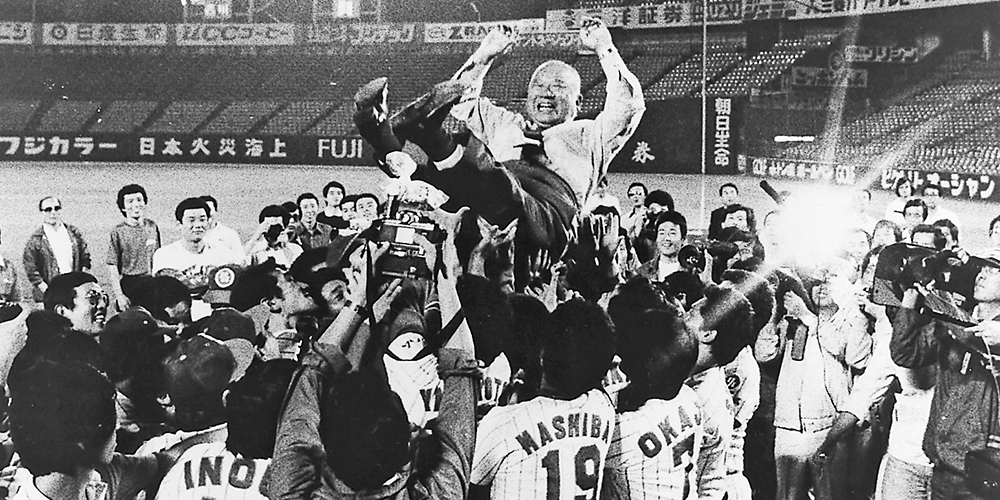
Team owner Yoshinori Okoso is tossed in the air as the Nippon-Ham Fighters celebrate their first league championship triumph.
- October 1981First league championship victory for the Nippon-Ham Fighters eight years after the team’s founding
-
In 1973, the 10th year after its founding, Nippon Meat Packers decided to raise its brand recognition by establishing a professional baseball team. There was some opposition to this move within the company because of the impact of the oil crisis. However, Yoshinori Okoso, who would become the team’s first owner, was determined to go ahead.
Okoso believed that a baseball team would raise the company’s profile, especially in Tokyo and its surrounding areas. He also wanted to contribute to the healthy development of young people by promoting baseball as a national sport. Fans throughout Japan were invited to suggest names for the new team. Okoso, who valued the fighting spirit, chose the name “Nippon-Ham Fighters.” The team’s home ground was the Korakuen Stadium in Tokyo.
In 1981 the Nippon-Ham Fighters reached a major milestone with their first Pacific League victory.
Team owner Yoshinori Okoso is tossed in the air as the Nippon-Ham Fighters celebrate their first league championship triumph.
February 1985The launch of the long-selling Schau EssenTM brand
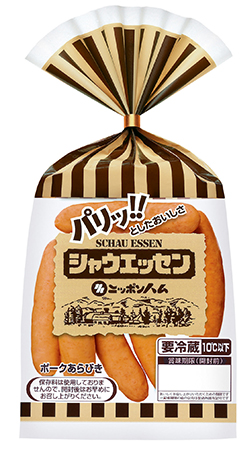
In Japan wiener sausages were traditionally seen primarily as a treat for children. However, in February 1985, Nippon Meat Packers launched the Schau EssenTM brand for consumers wishing to enjoy authentic sausages. Made from 100% coarse ground pork enclosed in casings made from sheep intestines, Schau EssenTM sausages have a wonderful crispy texture when eaten after boiling. They quickly became a major hit product, with sales reaching ¥10 billion in the first year and ¥26 billion in 1986. The launch of the new products was heralded by a memorable TV commercial that focused on the crispy sound made by snapping a Schau EssenTM sausage. Schau EssenTM sausages remain popular today 38 years after their launch. The name “Schau Essen” was coined from the German words for “show” and “eat.”
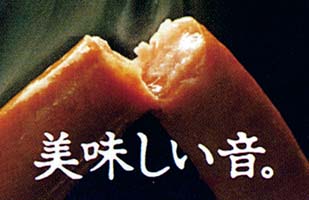
The crispy sound made by Schau EssenTM sausages was used effectively in a TV commercial.
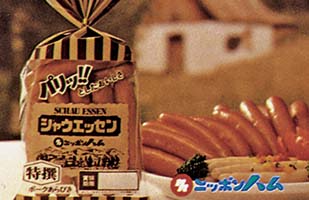
- February 1985The launch of the long-selling Schau EssenTM brand
-
In Japan wiener sausages were traditionally seen primarily as a treat for children. However, in February 1985, Nippon Meat Packers launched the Schau EssenTM brand for consumers wishing to enjoy authentic sausages. Made from 100% coarse ground pork enclosed in casings made from sheep intestines, Schau EssenTM sausages have a wonderful crispy texture when eaten after boiling. They quickly became a major hit product, with sales reaching ¥10 billion in the first year and ¥26 billion in 1986. The launch of the new products was heralded by a memorable TV commercial that focused on the crispy sound made by snapping a Schau EssenTM sausage. Schau EssenTM sausages remain popular today 38 years after their launch. The name “Schau Essen” was coined from the German words for “show” and “eat.”
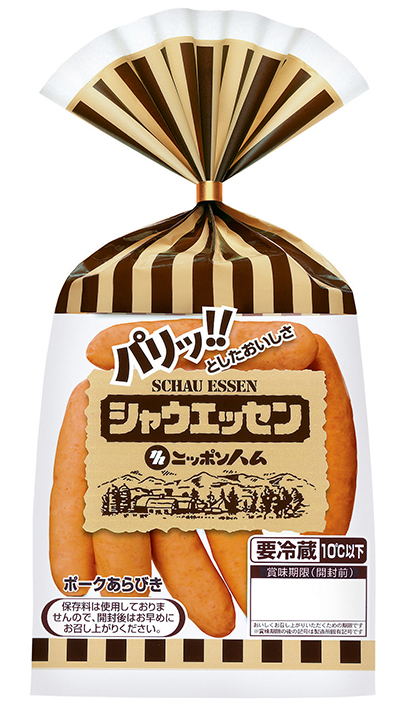
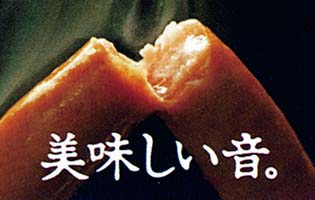
The crispy sound made by Schau EssenTM sausages was used effectively in a TV commercial.
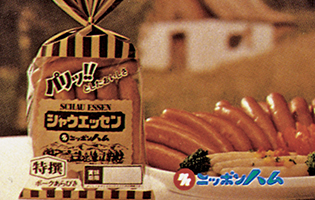
August 2002Aiming to earm the highest reputation for corporate "integrity" in Japan
Yoshikiyo Fujii, who became President of Nippon Meat Packers in the wake of a beef mislabeling problem, immediately initiated measures to restore the company’s reputation with consumers. One of those measures was the integration of consumer feedback and quality assurance units, which had previously been scattered across multiple business segments. He also recruited outside experts to form a Corporate Ethics Committee. The problem resulted in a consistent focus on compliance across the entire NH Food Group. The Group made a new start under the New Medium-Term Management Plan launched in March 2003, which introduced reforms targeting corporate culture and management systems.
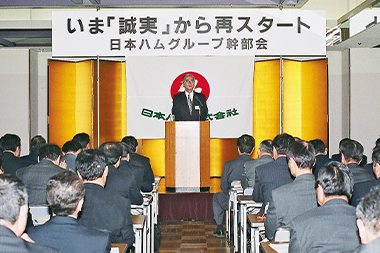
- August 2002Aiming to earm the highest reputation for corporate "integrity" in Japan
-
Yoshikiyo Fujii, who became President of Nippon Meat Packers in the wake of a beef mislabeling problem, immediately initiated measures to restore the company’s reputation with consumers. One of those measures was the integration of consumer feedback and quality assurance units, which had previously been scattered across multiple business segments. He also recruited outside experts to form a Corporate Ethics Committee. The problem resulted in a consistent focus on compliance across the entire NH Food Group. The Group made a new start under the New Medium-Term Management Plan launched in March 2003, which introduced reforms targeting corporate culture and management systems.
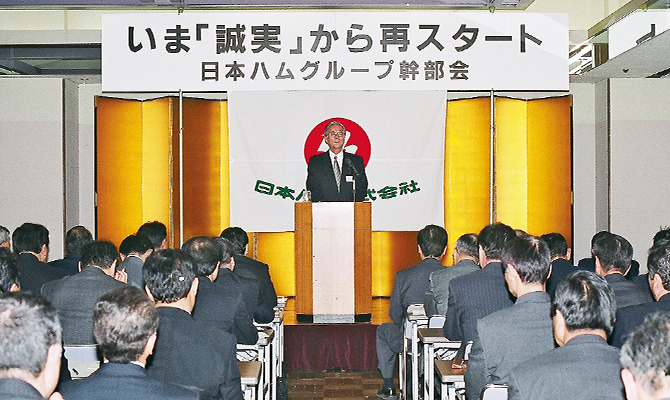
April 2016Creation of the Overseas Business Division
In April 2016, Nippon Meat Packers integrated its overseas business operations under the newly established Overseas Business Division. The new unit was given jurisdiction over 32 companies (as of 2016) operating in 17 overseas countries and regions, which had previously been administered by the Processed Foods Business Division, the Fresh Meats Business Division, and the Affiliated Business Division. The Overseas Business Division had three missions: to ensure financial self-sufficiency, to develop human resources with global management skills, and to lead the group’s evolution as a global enterprise.
Three regional business units—the Americas Operations Division, Australia Operations Division, Asia & Europe Operations Divison, and the Asia-Europe Business Department—were established under the Overseas Business Division. Overseas offices, which had traditionally been positioned as bases for exporting to Japan, were shifted to business models weighted toward local sales and sales to third countries.
As in the Japanese market, the NH Foods Group is working to expand its overseas sales by offering an extensive lineup of products and services made possible by its integrated strengths across multiple business areas, including fresh meats, ham and sausages, processed foods, marine food, and dairy products.
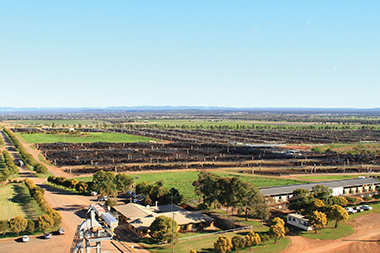
Whyalla Beef Pty. Ltd.
- April 2016Creation of the Overseas Business Division
-
In April 2016, Nippon Meat Packers integrated its overseas business operations under the newly established Overseas Business Division. The new unit was given jurisdiction over 32 companies (as of 2016) operating in 17 overseas countries and regions, which had previously been administered by the Processed Foods Business Division, the Fresh Meats Business Division, and the Affiliated Business Division. The Overseas Business Division had three missions: to ensure financial self-sufficiency, to develop human resources with global management skills, and to lead the group’s evolution as a global enterprise.
Three regional business units—the Americas Operations Division, Australia Operations Division, Asia & Europe Operations Divison, and the Asia-Europe Business Department—were established under the Overseas Business Division. Overseas offices, which had traditionally been positioned as bases for exporting to Japan, were shifted to business models weighted toward local sales and sales to third countries.
As in the Japanese market, the NH Foods Group is working to expand its overseas sales by offering an extensive lineup of products and services made possible by its integrated strengths across multiple business areas, including fresh meats, ham and sausages, processed foods, marine food, and dairy products.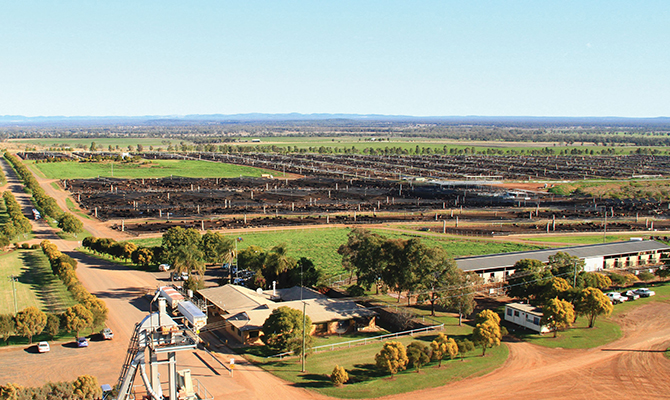
Whyalla Beef Pty. Ltd.
April 2021Formulation of Vision 2030
In April 2021, the NH Foods Group launched a new Medium-term Management Plan and adopted Vision 2030 as a milestone on its path to the realization of its corporate philosophy. The slogan for Vision 2030 is “Unleash new potentials for protein.”
Three factors led to the creation of Vision 2030. First, 2030 is the deadline year for the creation of a sustainable society through the realization of the Sustainable Development Goals (SDGs). Second, management decided to create a vision for 2030 from a medium- to long-term perspective, and to formulate the next Medium-Term Management Plan by working back from that vision. Third, the vision was seen as a way to define the specific approaches and values needed to fulfill our corporate philosophy by enabling people to experience the joy of eating.
NH Foods Group will unleash new ideas beyond existing domains to expand new potentials for protein as the power of life. We will endeavor to create diverse dietary lifestyles so people can experience the "Joy of Eating" more freely, while ensuring a stable supply of food with respect to the environment and society.

- April 2021Formulation of Vision 2030
-
In April 2021, the NH Foods Group launched a new Medium-term Management Plan and adopted Vision 2030 as a milestone on its path to the realization of its corporate philosophy. The slogan for Vision 2030 is “Unleash new potentials for protein.”
Three factors led to the creation of Vision 2030. First, 2030 is the deadline year for the creation of a sustainable society through the realization of the Sustainable Development Goals (SDGs). Second, management decided to create a vision for 2030 from a medium- to long-term perspective, and to formulate the next Medium-Term Management Plan by working back from that vision. Third, the vision was seen as a way to define the specific approaches and values needed to fulfill our corporate philosophy by enabling people to experience the joy of eating.
NH Foods Group will unleash new ideas beyond existing domains to expand new potentials for protein as the power of life. We will endeavor to create diverse dietary lifestyles so people can experience the "Joy of Eating" more freely, while ensuring a stable supply of food with respect to the environment and society.
